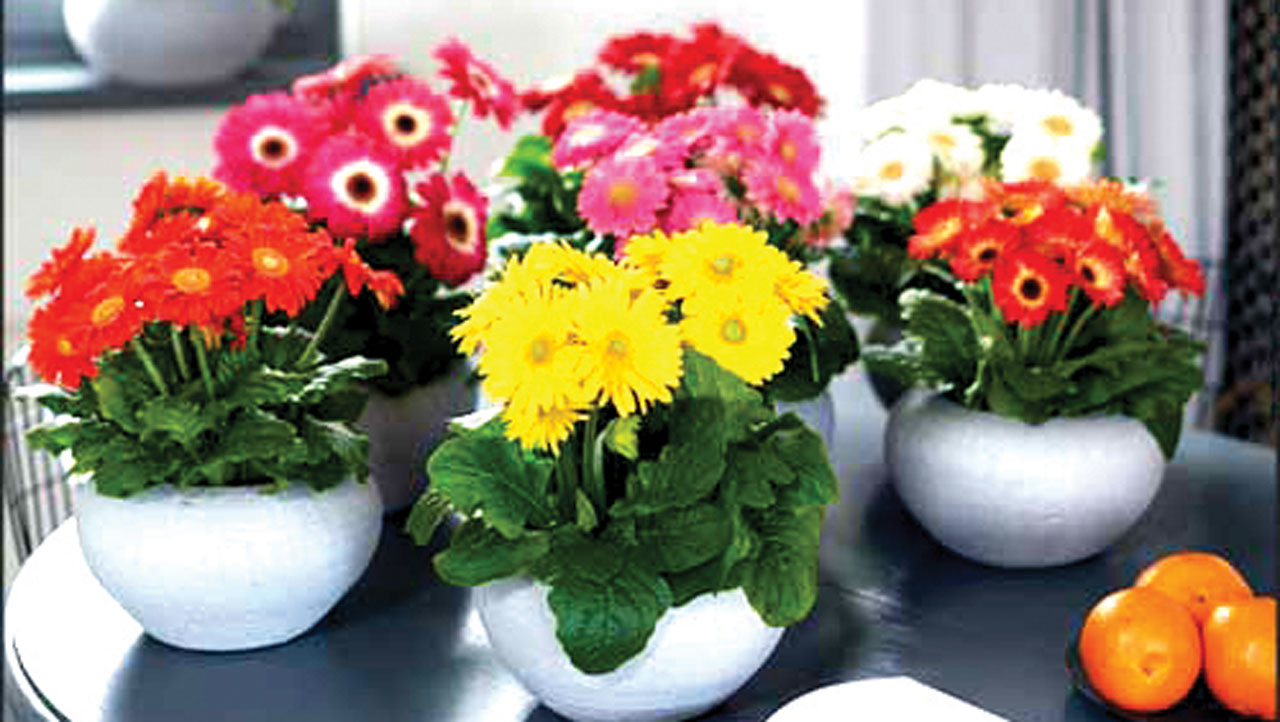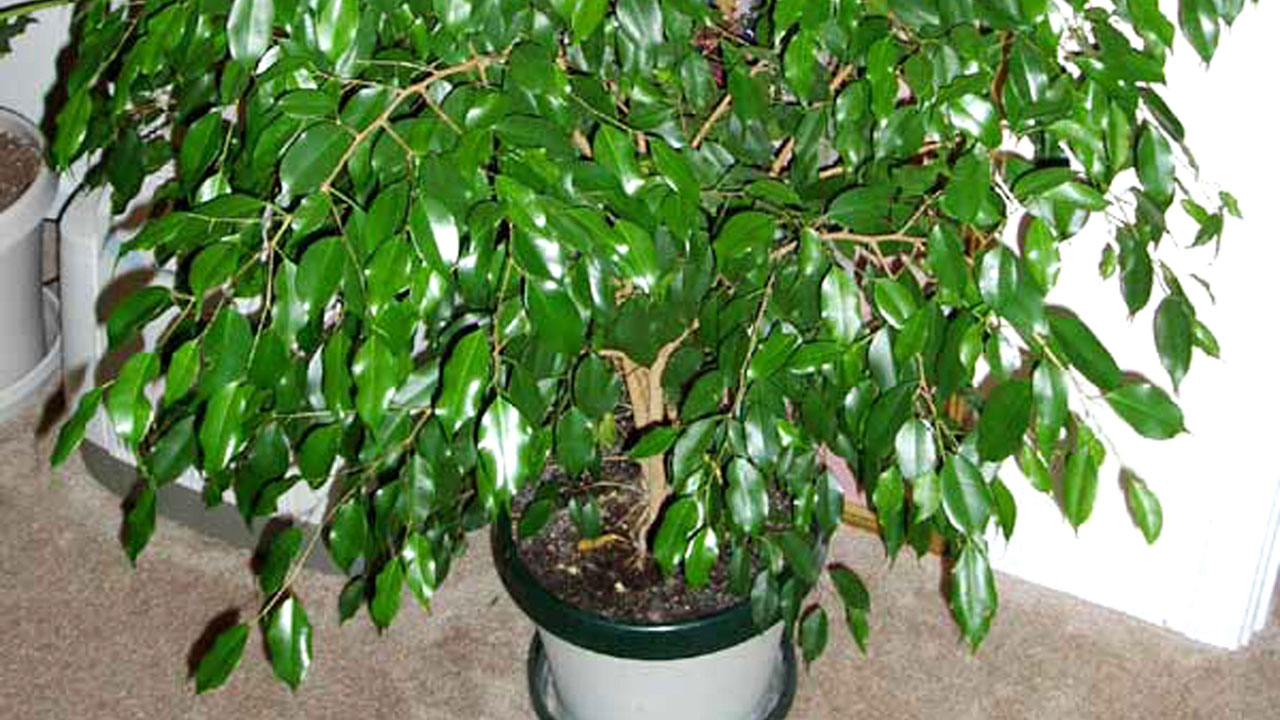Best air-purifying houseplants
Most of us are aware of air pollutants outside. There is no shortage of information and evidence floating around. But what most of us don’t know is the fact that the air we breathe indoors is riddled with pollutants
In fact environmental science research rank indoor air pollution among the top five environmental health risks. Did you know that? Well perhaps there’s that bit of out of sight out of mind thing. Since air pollutants inside the home are not visible, it’s easy to ignore them. They are unavoidable, so we resign ourselves to living with them some how but that’s dangerous. The American Society for Horticultural Science says people in industrial countries spend an estimated 80 to 90 percent of their time indoors. Not so easy fact to ignore?
Especially when you consider that significant, prolonged exposure to these pollutants can have side effects ranging from the minor (dizziness, headaches, nausea, itchy eyes, running noses, confusion) to the downright scary (heart failure, kidney failure and even coma)
How do you prevent these health risks?
House Plants To Clean The Air And RelievePet Allergies: According To NASA Houseplants are one of the solutions to clean the air and relieve pet allergies. They have two big advantages: 1. They purify air, alleviating sick building syndrome caused by formaldehyde, benzene, ammonia and other common irritants found in the homes and offices. 2. They help maintain humidity levels and stabilize them at recommend levels for allergy sufferers. In 1989 NASA (America’s National Aeronautics and Space Administration Agency) completed its seminal clean air study to determined how effective indoor greenery was at filtering out pollutants. Their goal was to find plants that could be grown on Mars and Lunar bases that would be easy to maintain and improve indoor air quality, without adding additional toxic compounds to the air.
They came to the conclusion that certain houseplants prove highly effective at doing just that, making them really excellent alternatives to those costly air filtering machines and other such high-tech devices that promise to do the same. To that end NASA officially recommends at least one plant per 100squares feet of home space.
More than 25years later, the research is still valid. So, when you’re ready to go into purifying the air in your home or work place, there’s an easy affordable and beautiful alternative to combat indoor air pollutants: house plants, some of the best air purifying house plants are listed below and they are easy to keep.
Areca palm
It’s aesthetically pleasing appearance and easy to care for nature makes the areca or butterfly palm an appealing houseplant. If you consider this lush foliage landed at the very top of NASA’s study for purifying indoor air, getting one for your home or office is truly a no brainers. The Areca palm adds a tropic feel to your home while also work as a natural humidifier. The proper amount of humidity, which is the the amount of water vapor in the air, can improve allergy symptoms, like nasal congestion and irritation, making it easier to breathe. Growing Areca plant requires having access to bright indirect sunlight because direct exposure to the sun can damage the leaves. It prefers to live at a temperature between 60 F and 75F. Exposure to cold can also damage the leaves. Take care not to overwater your Areca palm and ensure its pot has plenty of drainage.
Dracaena fragrans (White-edged) and Dracaena reflexa (red-edged), corn stalk dracaena or corn plant is an upright evergreen shrub that produces narrow green, yellow or cream- colored leaves. Once the plant starts to mature white flowers start to bloom, shortly followed by small red-orange berries. This low-maintenance plant is extremely popular not just because it looks cool, but also because it takes little work to keep it alive. All you need to do to keep this plant alive is to keep it in an area with indirect sunlight and keep the soil slightly moist.
A member of the dracaena family, this popular house plant KO’s benzene, formaldehyde and trichloroethylene. It’s one of the most efficient plants at doing that.
Be forewarned, though, these shiny leafed guys can get big in nature, they can grow up to 4feet. However if you can limit the size of your pot and cut back to scale occasionally your corn plant will likely grow to be around 6 feet tall plant full of air purifying potential.
Sanseviera triasciata (Variegated Snake Plant)
Also known as Mother- in- Law’s Tongue, this our West African native plants sucks benzene, formaldehyde, trichloroethylene, xylene and toluene out of the air. Bonus: not only is its vibrant pattern beautiful but the variegated snake plants also nearly impossible to kill. So rejoice blank thumbs! Snake plant is one of the most recommended plants for improving air quality. The optimal place to keep this inexpensive low-maintenance plant is the bedroom because it converts CO2 into oxygen at night. While most plants take away oxygen at night.
Gerbera jamesonii (Barberton daisy)
If you like a splash of color with your air purification, you need look no further than the oh so sweet Gerbera daisy that is native to East Africa. This so happy flowering plant may be a bit temperamental, but who wouldn’t put in a little extra work for such beautiful blooms! Besides, the Gerbera also gets rid of benzene, formaldehyde and trichloroethylene in the air. Barberton daisy’s prefer full sun, plenty of water and well-drained soil. If you try to use this as an indoor houseplant houseplant, make sure you have it in an area that has plenty of natural light. It also thrives in moist soil. Be sure to keep the soil moist as often as possible, without overwatering it. Gerbera jamesonii is able to withstand a wide range of temperatures, so you don’t need to be concerned with keeping your home at a specific temperature.
Weeping fig (ficus Benjamina)
Best known as Weeping fig, Ficus benjamina lets you bring a bit at treelike grandeur into your home in a manageable size (they don’t exceed 6 feet). This particular ficus comes in a variety of styles Prefer the elegance of a leafless braided trunk? You got it. More of a bushy plant person? You can have that too. Either way, you’ll have a plant that gets rid the air around your indoors of benzene, formaldehyde and trichloroethylene.
If you don’t have an air purifier in your home, or just want to take extra precautions, one would recommend adding a few of these houseplants to the most important areas of your home. Itt’s a great step to improving the air quality inside your home.
With proper care and the right type of soil, Chrysanthemum morifolium will start to produce lots of beautiful blooms of various colors. These blooms not only help brighten the room, they als help cleanse the air of many chemicals that are common in homes. These include formaldehyde, xylene, ammonia, benzene, toluene and trichloroethylene.
Boston fern, Sword fern (Nephrolepsis exaltata) is native to tropical region throughout the world originating in humid forests and swamps.Not all ferns make good indoor choice, but the Boston fern is an exception. They are a little fickle, sure. However, if you take good care of them, they will return the favor by sapping formaldehyde xylene and toluene from your surrounding.
Epripremnum (or Scindapsus) aureum orDevil’s ivy, Pothos
You may hear it referred to as devil’s ivy ,taro vine, golden vpothos or any numbers of names. However you should be able to track it down with its botanical name Epripremnum aureum or ask for Devil’s ivy. And you should track it down because this trailing beauty will breakdown the formaldehyde, benzene, xylene and toluene in your home. Characterized by its golden heart-shaped leaves and stems Pothos is arguably the easiest houseplant to grow, tolerant of low light and erratic watering. Pothos don’t reqire green thumb at all.They are happy to go about their business of photosynthesis in many kinds of light and will flourish in vases of water or dry soil. They are the most popular plant because they are so easy to care for. Stays green even when kept in the dark.. This fast growing vine will cascade from a hanging basket. Pothos are the quintessential easy-care houseplants. They are attractive, durable and easy to grow.
Hedera helix (English ivy, European ivy )
Definitely gets the job done where cleaning indoor air is concerned benzene, formaldehyde and trichloroethylere,toluene and even fecal particles are no match for this charming creeper.
Anthurium andraeanum (Flamingo lily)
andraeanum is a beautiful evergreen plant that is most known for its gorgeous flowers that last for weeks. According to NASA it’s incredibly effective at removing airborne formaldehye, ammonia, toluene and xylene in your home or office.
Philodendron
Philodendron is another easy plant to grow even for those without green thumbs. These houseplants enjoy indirect sunlight, regularwatering, and macro nutrient rich fertilizer once a month.It’s easy to confuse a pothos plant with a philodendrom. PRemember, pothos are typically smaller, and variegated with a white or creamy color.
Chrysanthemum morifolium (florist mum, pot mum, florist Chrysanthe)
Sometimes called Florist’s daisy or Hardy Garden Mum, this houseplant is another popular perennial plant that people like to have in their home. Unlike Peace lilies, this houseplant likes direct sunlight and medium amount of water.
With proper care and the right type of soil, Chrysanthemum morifolium will start to produce lots of beautiful blooms of various colors. These blooms not only help brighten the room, they als help cleanse the air of many chemicals that are common in homes. These include formaldehyde, xylene, ammonia, benzene, toluene and trichloroethylene.If you don’t have an air purifier in your home, or just want to take extra precautions, one would recommend adding a few of these houseplants to the most important areas of your home. Itt’s a great step to improving the air quality inside your home.










0 Comments
We will review and take appropriate action.